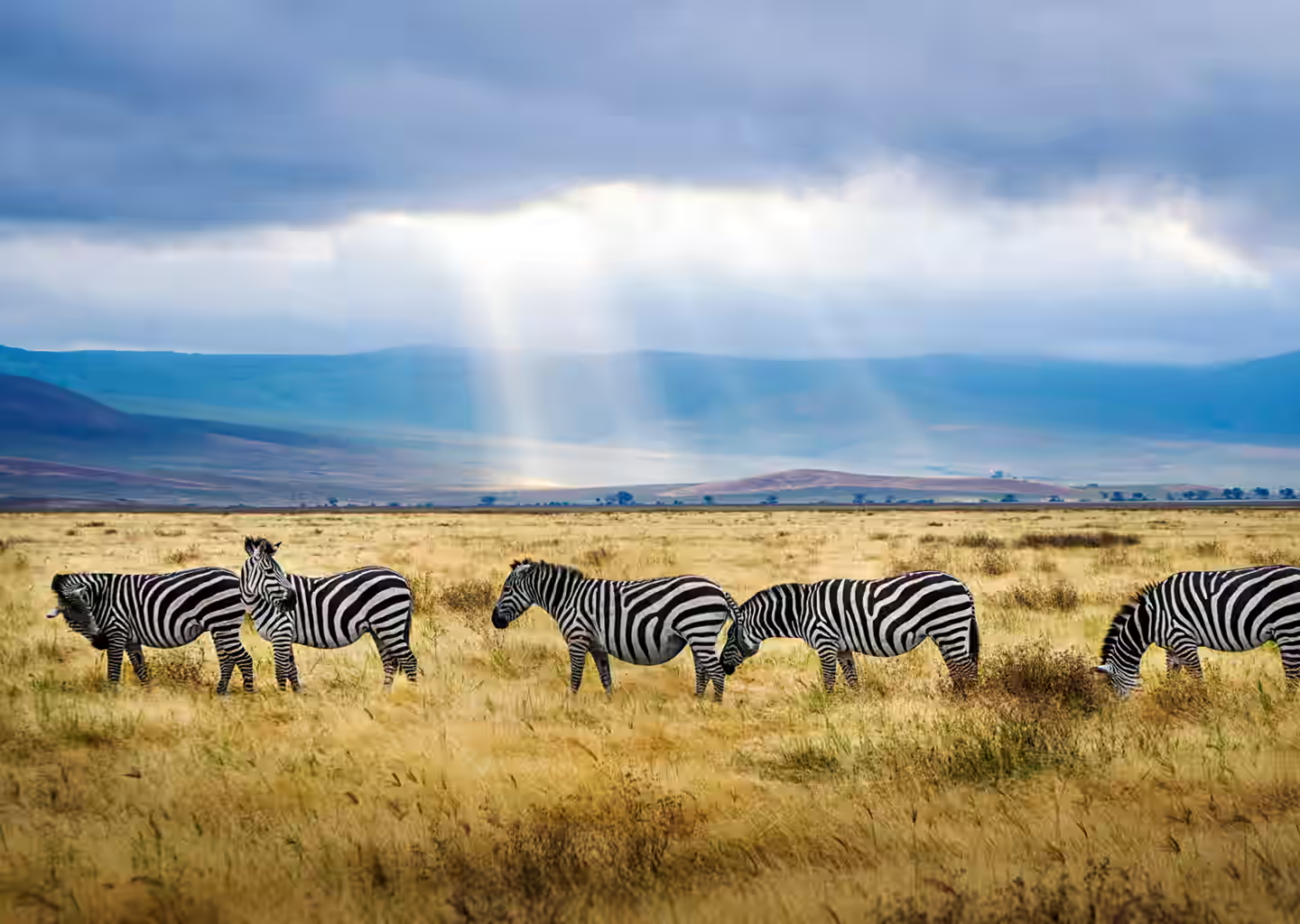Best Months for Budget Safari Deals: Seasonal Guide to Tanzania’s Wildlife Wonders
Tanzania’s safari seasons are known for offering varied wildlife experiences and price points throughout the year, making it possible for budget-conscious travellers to witness the country’s spectacular fauna and landscapes. This comprehensive guide explores the seasonal nuances of Tanzanian safaris, helping you identify the best time for a budget-friendly adventure without compromising on wildlife encounters. From the lush green season to the peak of the Great Migration, we’ll navigate the year-round opportunities for affordable safaris in Tanzania.
What factors influence the best time for a budget safari in Tanzania?
Several key factors affect the optimal timing for a budget-friendly safari:
- Weather patterns: Seasonal rains impact vegetation, wildlife behaviour, and road conditions, influencing both safari experiences and prices.
- Wildlife movements: Animal migrations and breeding seasons create diverse viewing opportunities throughout the year, affecting demand and costs.
- Tourist seasons: High and low seasons dictated by international travel patterns significantly impact the pricing and availability of safari services.
- Special events: Unique wildlife spectacles, such as the Great Migration river crossings, can drive up prices during specific periods.
- School holidays: Both local and international school breaks can influence crowd levels and pricing, especially for family-friendly safaris.
Tanzania’s Safari Seasons: An Overview
| Season | Months | Weather | Wildlife Highlights | Price Range |
|---|---|---|---|---|
| Peak (Dry) | June-October | Dry, mild | Great Migration, predator action | $$$-$$$$ |
| Low (Green) | March-May | Heavy rains, lush | Migratory birds, newborns | $-$$ |
| Shoulder (Short rains) | November-December | Short rains, warm | Migration returns, predators | $$-$$$ |
| Shoulder (Short dry) | January-February | Warm, some rain | Calving season, predators | $$-$$$ |
Best Time for Budget Safaris: Low Season (March-May)
The low season, also known as the “green season,” offers the best deals for budget-conscious safari-goers.
Pros:
- Lowest prices (up to 40% off peak season rates)
- Lush, photogenic landscapes
- Fewer tourists and crowded sightings
- Excellent birdwatching opportunities
- Chance to see newborn animals
Cons:
- Heavy rains can affect road conditions
- Some camps and lodges may close
- Thick vegetation can make wildlife spotting challenging
Wildlife highlights:
- Migratory birds in full breeding plumage
- Wildebeest calving in southern Serengeti (March)
- Predators taking advantage of vulnerable young animals
Tips for dealing with weather:
- Pack waterproof gear and quick-dry clothing
- Choose lodges with all-weather access
- Opt for parks with year-round wildlife populations (e.g., Ngorongoro Crater)
Price comparison (example: 3-day Serengeti safari):
| Category | Low Season | Peak Season | Savings |
|---|---|---|---|
| Budget | $600 | $900 | 33% |
| Mid-range | $900 | $1500 | 40% |
| Luxury | $1500 | $2500 | 40% |
Value for Money: Shoulder Seasons (November-December, January-February)
Shoulder seasons offer a balanced mix of good weather, wildlife viewing, and moderate prices.
Benefits:
- Better weather conditions than low-season
- Good wildlife viewing opportunities
- Prices lower than peak season (10-20% savings)
- Less crowded than in peak months
Wildlife opportunities:
- November-December: Return leg of the Great Migration
- January-February: Wildebeest calving season in southern Serengeti
Budget-saving tips for shoulder seasons:
- Book in advance for early bird discounts
- Look for “stay longer” deals offering free nights
- Combine popular parks with less-visited ones for better rates
- Consider mobile camping safaris for lower costs
Peak Season on a Budget: June-October
While peak season offers the best wildlife viewing, budget options are still available with careful planning.
Challenges:
- Highest demand and prices
- Popular sites can be crowded
- You need to book well in advance
Opportunities:
- Ideal weather conditions
- Excellent wildlife viewing, including the Great Migration
Tips for finding deals:
- Focus on less popular parks (e.g., Tarangire instead of Serengeti)
- Choose budget accommodations outside park boundaries
- Look for last-minute deals if your dates are flexible
- Consider group tours to share costs
Comparison of budget options across parks (peak season):
| Park | Budget Lodging | Mid-range Lodging | Game Drive Costs |
|---|---|---|---|
| Serengeti | $150-200/night | $300-400/night | $250-350/day |
| Tarangire | $80-120/night | $200-300/night | $150-250/day |
| Ruaha | $100-150/night | $250-350/night | $200-300/day |
| Selous | $120-180/night | $280-380/night | $180-280/day |
Month-by-Month Budget Safari Guide
| Month | Weather | Wildlife Highlights | Budget-Friendliness (1-5) | Special Tips |
|---|---|---|---|---|
| January | Warm, some rain | Wildebeest calving | 3 | Book early for calving season |
| February | Warm, some rain | Predator action | 3 | Look for Valentine’s packages |
| March | Start of rains | Migratory birds | 5 | Pack rain gear, enjoy low rates |
| April | Peak rains | Lush landscapes | 5 | Biggest discounts available |
| May | Rains easing | Newborn animals | 4 | Great for photography, fewer crowds |
| June | Dry, mild | Start of migration | 2 | Book early, focus on less popular parks |
| July | Dry, cool | Migration in full swing | 1 | Consider mobile camps for savings |
| August | Dry, cool | River crossings | 1 | Combine with budget-friendly activities |
| September | Dry, warming | Excellent game viewing | 2 | Look for shoulder season rates starting |
| October | Mostly dry | Last chance for migration | 2 | End-of-season deals possible |
| November | Short rains | Migration returning south | 3 | Good balance of price and wildlife |
| December | Short rains | Green season begins | 3 | Avoid holiday weeks for better rates |
Budget-Friendly Parks and Their Best Months
- Tarangire National Park
- Best budget months: March-May, November
- Key attractions: Large elephant herds, baobab trees
- Estimated savings: 30-40% compared to peak season
- Selous Game Reserve (part of Nyerere National Park)
- Best budget months: January-March, November-December
- Key attractions: Boat safaris, wild dogs
- Estimated savings: 25-35% compared to peak season
- Ruaha National Park
- Best budget months: January-March, November-December
- Key attractions: Large predator populations, lesser kudu
- Estimated savings: 30-40% compared to peak season
- Lake Manyara National Park
- Best budget months: April-May, November
- Key attractions: Tree-climbing lions, flamingos
- Estimated savings: 20-30% compared to peak season
- Ngorongoro Conservation Area (excluding crater)
- Best budget months: April-May, November
- Key attractions: Diverse ecosystems, Maasai culture
- Estimated savings: 25-35% compared to peak season
How to Book for the Best Budget Safari Deals
- Timing your booking:
- Early booking (6+ months in advance): Best for peak season, popular parks
- Last-minute deals: Possible in low and shoulder seasons, requires flexibility
- Early booking pros:
- Better availability
- Early bird discounts (up to 20%)
- More time to plan and budget
- Last-minute booking pros:
- Potential for significant discounts (up to 40%)
- Good for flexible travelers in off-peak seasons
- Tips for negotiating rates:
- Ask about group discounts
- Inquire about longer stay discounts
- Compare rates across multiple operators
- Finding package deals:
- Look for combined park packages
- Consider fly-in safaris for remote parks
- Check for deals that include cultural experiences
Frequently Asked Questions About the Best Time for Budget Safaris in Tanzania
- Can I see the Great Migration on a budget safari?
Yes, it’s possible to see the migration on a budget, especially in the shoulder seasons (November-December in northern Serengeti, January-March in southern Serengeti). Prices are lower, and wildlife viewing is still excellent. - Is it worth visiting Tanzania during the rainy season for a budget safari?
The rainy season (March-May) offers the lowest prices and unique wildlife experiences, including lush landscapes and newborn animals. While some roads may be challenging, many parks remain accessible and less crowded. - What’s the best month for a balance of good weather, wildlife viewing, and budget-friendly prices?
November and early December offer a good balance. The short rains bring fresh vegetation and wildlife, prices are lower than peak season, and the weather is generally pleasant with occasional showers. - Are budget safaris available during school holiday periods?
Budget options are more limited during school holidays, especially in July-August and December-January. Book well in advance and consider less popular parks for better deals during these periods. - How much can I save by choosing a budget-friendly month for my safari?
Savings can range from 20-40% compared to peak season prices, depending on the month and specific destinations. The biggest savings are typically found in April and May.
Choosing the right time for your Tanzania safari can significantly impact both your budget and wildlife viewing experiences. While the green season (March- May) offers the most substantial savings, shoulder seasons provide an excellent balance of affordability and optimal safari conditions. Even during peak months, budget options are available with strategic planning and flexibility.
Remember that regardless of when you choose to visit, Tanzania’s diverse ecosystems and abundant wildlife ensure a memorable safari experience. By considering the seasonal variations outlined in this guide, you can plan a budget-friendly adventure that aligns with your wildlife viewing goals and financial considerations.
Ready to start planning your budget-friendly Tanzania safari? Get a personalized quote tailored to your preferred travel dates and experience the wonders of Tanzania’s wildlife!



